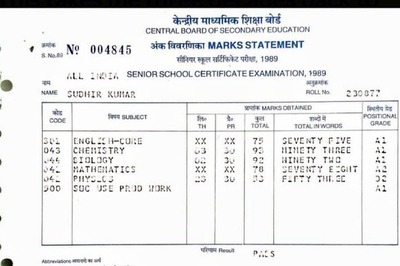
views
Deciding Whether to Subdivide Your Property

Understand what subdividing property means. Subdividing property means dividing it into several parts. Land owners typically subdivide their property into multiple residential units. This usually increases the value of the land. When the land is subdivided into more than one lot, each lot is then sold to one or more buyers. This is more profitable than keeping the property as one residential unit. Smaller residential lots may be easier to sell than larger pieces of land. This increases the overall value of the land.

Evaluate the risk of subdividing your property. Subdividing property is commonplace among land developers, builders, real estate agents and other professionals. However, if you are new to the process, it can be risky if you don’t do your due diligence. Evaluate a number of preliminary items to determine whether your property is even eligible for subdivision. You could waste a lot of time and money designing and applying for a subdivision when your property isn’t even eligible.

Consider the size and scope of your plans. The complexities associated with subdividing property increase as the property size increases. It is less complicated to subdivide a smaller piece of property (one that is less than an acre in size) into only two plots. Larger projects are more complex. Once you start planning to divide properties that are larger than an acre into three or more plots, things get much more complicated. Other factors that complicate subdivision of property include whether the lot fronts an existing public road and whether you intend to build new roads, utilities and other infrastructure. Depending on the site design and layout, a subdivision project can easily escalate into a full-scale community development project.
Doing Your Research

Check for restrictions. Make sure there are no local ordinances, neighborhood covenants or deed restrictions that may block your plans. A title search will identify any of these problems as well as the existence of any outstanding liens or other claims on the land. Find a title company. Your real estate agent or lender can recommend one with whom they usually work, or you can get recommendations from peers. The title company does the title search to make sure that the seller has the legal right to sell the property. Once the title company verifies the validity of the title, they will release a title-opinion letter that states their findings. The title company will also issue title insurance. Title insurance protects the buyer should previous owners or debtors state they have a claim on the property. During the title search, the title company scrutinizes old deeds to verify that the seller is the only owner of the property. The title search also uncovers any unpaid debts on the property, such as taxes, liens or loans.

Estimate the impact of the market on your subdivided property. Make sure there is a market for lots in your area. Sell them at a price that makes sense. Research the market and other properties in the area to determine a lot size, layout and price that is marketable in the area. Consult a trusted real estate agent with local experience for advice on this matter. Get input from other builders who have worked in your area. Understand that the location of your property impacts its current value and how it might appreciate. Study the values of properties that are currently on the market in the area and others that have sold in the recent past. For example, if you are planning to subdivide property to build residential homes, determine the home and lot size that will carry the highest value in your location. If most homes that sell in the area are smaller or are on smaller lots, don't elect to build large, expensive houses on big lots. They won't sell for nearly as much as they might in a more upscale neighborhood. An appraiser won't be able to assign a value to a home that's any higher than the highest home price in the location. So it's wise to research the market and begin with an appropriate size and price in mind.

Understand zoning and other requirements. Even if there are no ordinances, covenants or other restrictions stopping you from subdividing the land, local zoning, subdivision and property-development laws may affect your plans. Every municipality and county has its own zoning regulations, lot- and building-size restrictions and requirements pertaining to open space. Research these laws before investing in any plans to subdivide the property. It is possible to apply for zoning variances, which may be granted if your request is deemed reasonable. Contact the the municipal planning and building department of the township or municipality to learn the property's zoning category. If you cannot find the information there, research local laws on websites such as State and Local Government on the Net or the Municipal Code Corporation (Municode). Zoning and local rules may affect the way the property can be used. The neighborhood might be classified for single-family residential, multi-family residential, transitional, or a mixed use such as residential plus commercial.

Confirm that all of your lots will be properly serviced. You will not be able to sell the properties if they do not have access to public roads and utilities such as water, sewer and power. Confirm that these utilities are available for your lots and that they can handle the added capacity of the new residences you plan to build there. This process is sometimes referred to as site development or technical due diligence. It is the process of evaluating the availability of and options for key utilities and infrastructure at the building lot like power, water, sewer and communications. If you are buying a finished lot for sale, your agreement with the builder will cover these services. If you are buying a vacant or undeveloped lot outside of a neighborhood or established city limit, you will have to make plans for getting power, water, sewer and communications services to the property. Electric and gas power can be brought to the property by the power company. Don't rule out alternative or green sources of power: solar, natural gas, propane, heating oil or even geothermal. Even if sewer and public water are available for a parcel of land, you may have to make arrangements to extend these services to the structures you plan to build. Consider alternatives like wells, and rainwater containment and filtration systems. Public sewer service is not always available. In these cases you may have to install a septic system. Plan to wire appropriately for the types of communications systems you want to install, such as high-speed Internet, telephone and cable television. Costs for site development can add up significantly. These costs include fees and permits and will vary depending on site and soil conditions, your development plans, and local fees and permitting costs. The town or state may also charge you impact fees. These help communities pay for schools, infrastructure and other public costs associated with adding new homes to the community. Impact fees can conceivably be quite high.
Applying for Approval to Subdivide Property

Do a title search. A title search is performed by a title company. It is an examination of public records to find out if there are any previous owners who might claim an interest in the property or if there are unpaid debts such as taxes or loans. If you already own the property, a title search was likely done before you made settlement. However, if you are purchasing the property with the intention of subdividing it, make sure a title search is completed before you go to settlement.

Verify the process locally. Contact the nearest planning, zoning and/or development office. Your city or township may post information on their website. If not, you will have to call them. Ask whether your property qualifies for subdivision. Find out about ordinances or restrictions with which you will have to comply.

Design the subdivision. Hire a developer or civil engineer to design the property. The plan will specify how the land is to be divided, including the number and size of subdivisions. The design should also illustrate how roads will reach the properties. Hire a firm that employs civil engineers, land surveyors and environmental consultants with experience in your area. They will begin by studying the topography of the land and identifying critical resource areas that cannot be developed. They will use this information to draft approximate property lines. Then they will review local bylaws and present you with concept sketches that show you options for development of the site. Open-space subdivisions conserve open space with shorter roads and reduced lot frontage. Mixed-use developments include residential, business and recreational areas. Affordable housing developments not only help low-income people to purchase a home, but they can also turn sites with difficult constraints or little design potential into lucrative properties. Senior housing combines open space with accessible recreation and condominiums. It can be a way to attract new residents to an area without overburdening the schools. Once you choose the subdivision you want, the design firm will work with you to survey the land, delineate wetlands, design drainage and control erosion.

Survey the property. Your city or town may offer surveying services. If not, hire a private surveyor or engineer to survey the property and create a plat. A plat is a map, drawn to scale, that shows the subdivisions on a plot of land. It identifies boundaries, easements, flood zones, roadways, and access rights-of-way. It provides the legal description of the piece of property. Plats are required for any land that is to be subdivided.

Submit your application to the proper government agency. Your local planning board will decide whether or not to approve your petition. Include your plat map, certificate of title and application fee with your application. In most cases the planning board will decide your case during a regular meeting. In other cases they will hold a public hearing. Once you have your subdivision plans all put together, go to the local planning board and schedule a pre-lodgement meeting. Bring your certificate of title and your subdivision plans. Show how big the property is, and identify areas for open spaces, existing and new houses, driveways and car parks. Urban planners on the council will review your proposal to make sure it meets local planning policies and guidelines. Don't be surprised if they make recommendations for you to adjust or refine your plans. If necessary, meet with your team of architects, land surveyors and development planners to rework the plan to meet the council's recommendations. Once you have met the above requirements, it is time to lodge your application. The township or municipality will accept your application and go through the process of approving it. This process can take anywhere from a few weeks to several months. Track your application by communicating with the council frequently to see if they have questions or need more information.

File a planning or zoning variance or waiver if necessary. If your property does not qualify for subdivision or your application for subdivision is denied for some reason, you do have recourse. Filing for a planning or zoning variance or waiver re-opens the case. Often upon re-examination, planning boards will grant exceptions when they deem them reasonable.
Paying for Subdivision of Property

Know the factors that influence the cost of subdivision. Many variables influence the cost. These include the size of the property, its location, and the way you intend to use it. The number of subdivisions also affects the cost. The more subdivisions you intend, the more it is going to cost. There is no way to accurately estimate how much it is going to cost to subdivide your property since so many factors impact the total cost. These include your location, property laws, zoning requirements, the size and shape of your property, whether or not there are any existing buildings on the property and the availability of access to utilities and infrastructure. Land-subdivision costs may include a land survey, legal fees, application fees, clearing the site, supplying utilities, inspection fees and permit costs. If you want to get an estimate for the cost of subdivision of a specific property, contact a land-developing firm in your area that has civil engineers, architects and land surveyors. They will have the knowledge and experience in your locale to be able to tell you what costs to anticipate.

Pay the local application fee. This will accompany your application and is paid to your local government agency. You may also be responsible for hearing, recording, review and tax-map-update fees. You could pay as much as $10,000 on these fees, depending on your location and how many subdivisions you are requesting. For only two subdivisions, the cost will much lower.

Pay surveyors. Surveyors charge by the hour. The amount you need to budget for surveying depends on the size of the property. For a smaller property, the surveyor may charge you between $500 and $2,500. The cost of surveying and platting larger properties can range much higher.

Pay for required property improvements. These requirements can make your expenses skyrocket. Approval for property subdivision usually comes with requirements that you must make certain improvements to the property. These usually have to do with access roads, sewer and utilities. These improvements can typically cost tens of thousands of dollars.




















Comments
0 comment